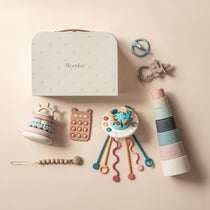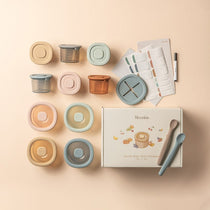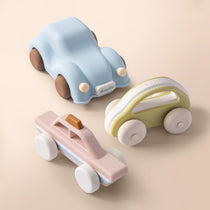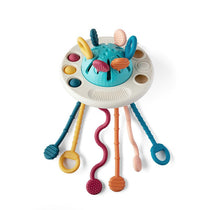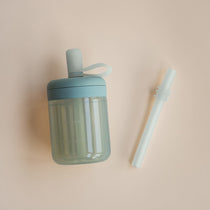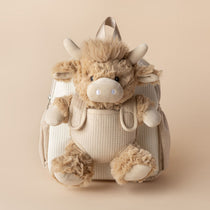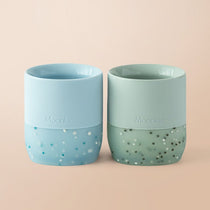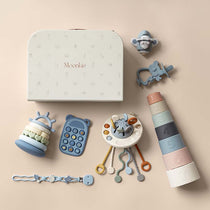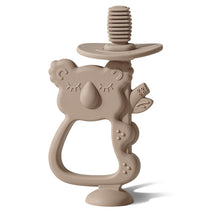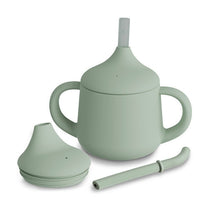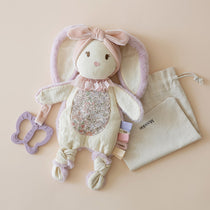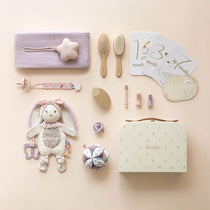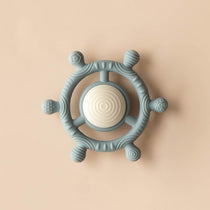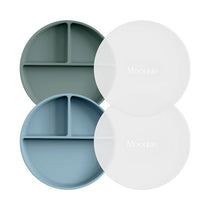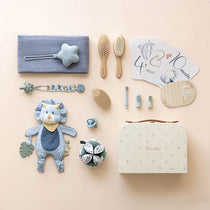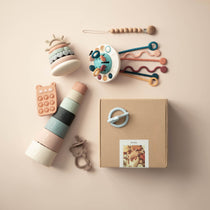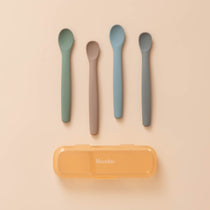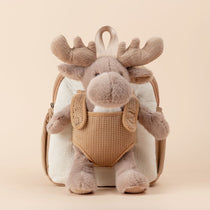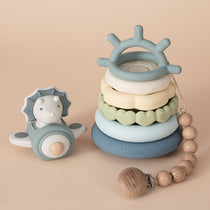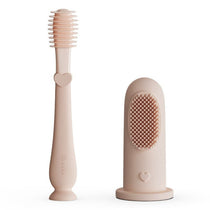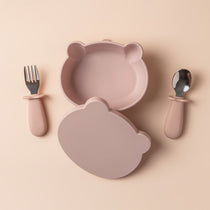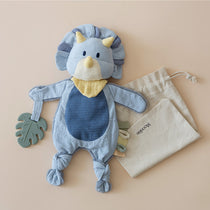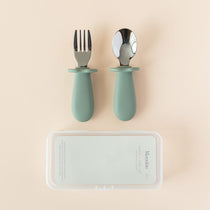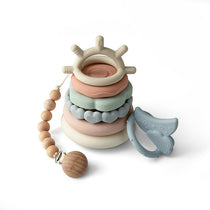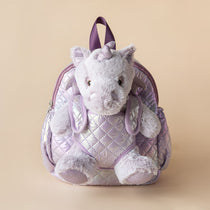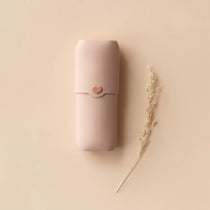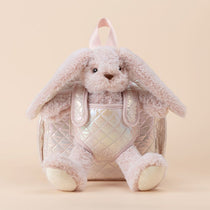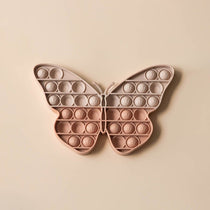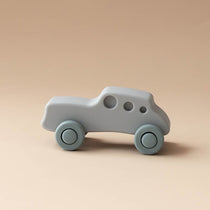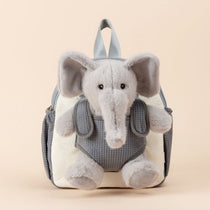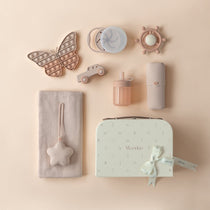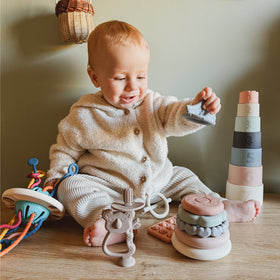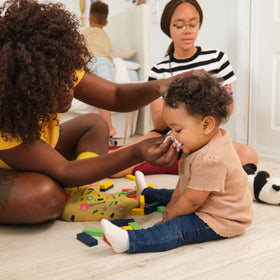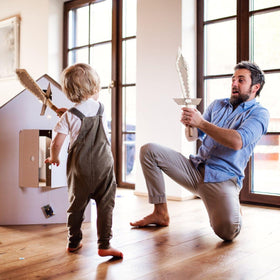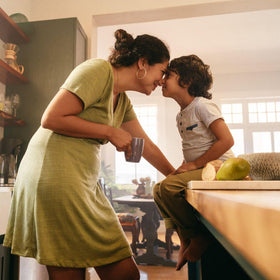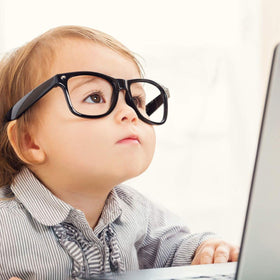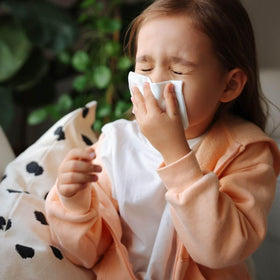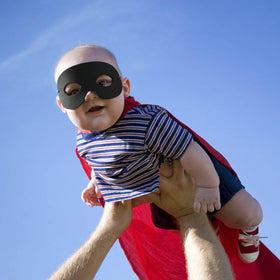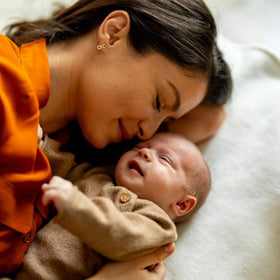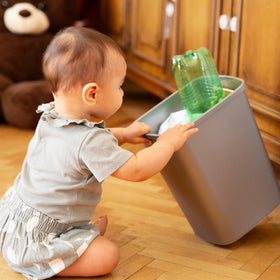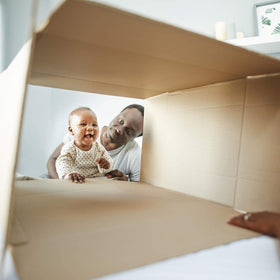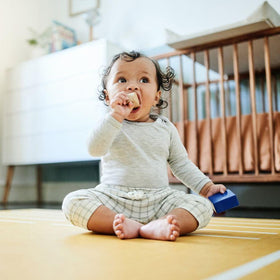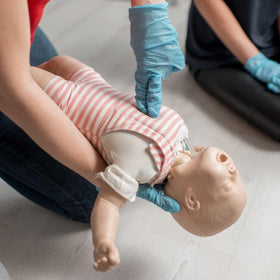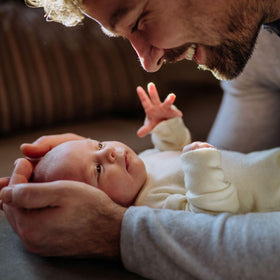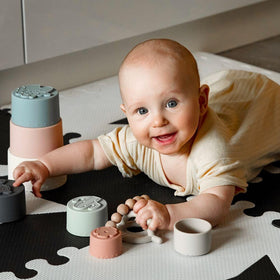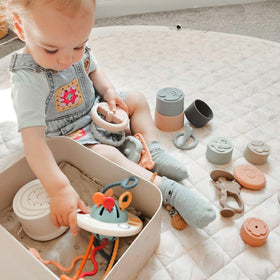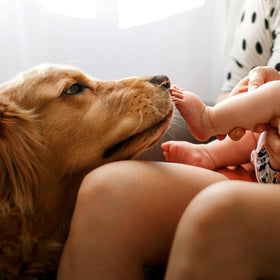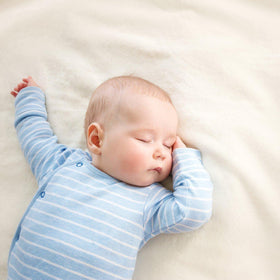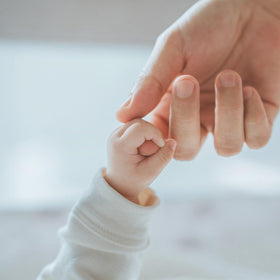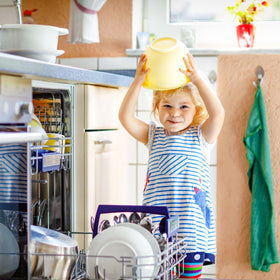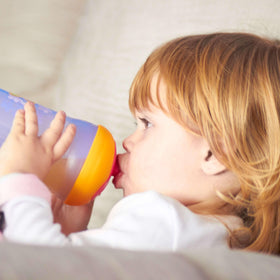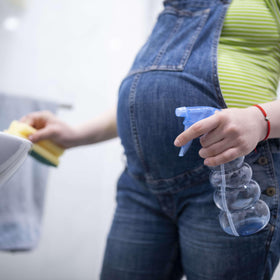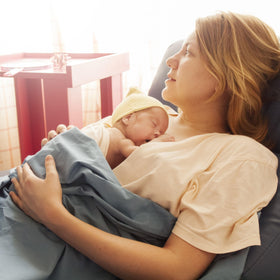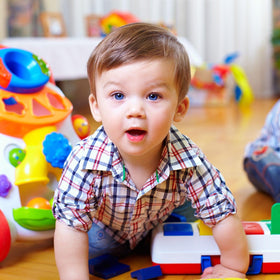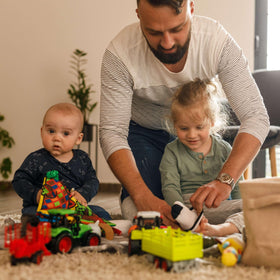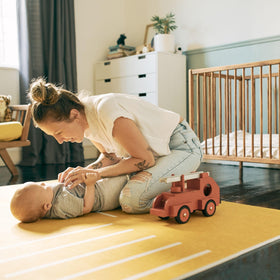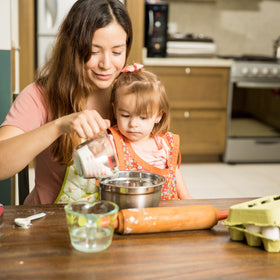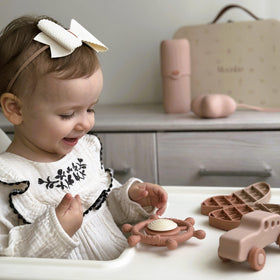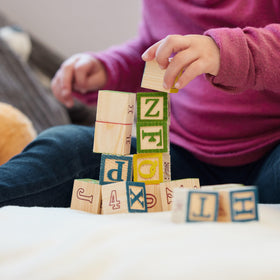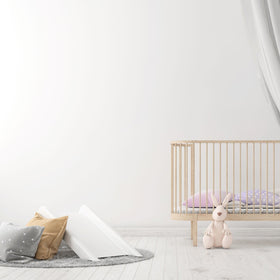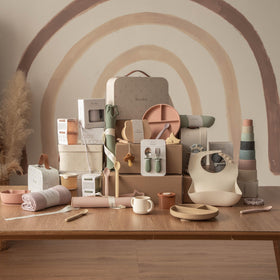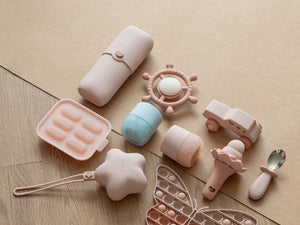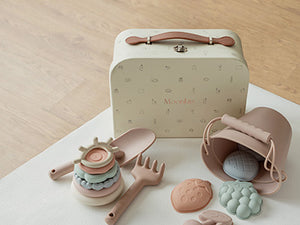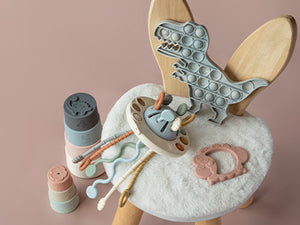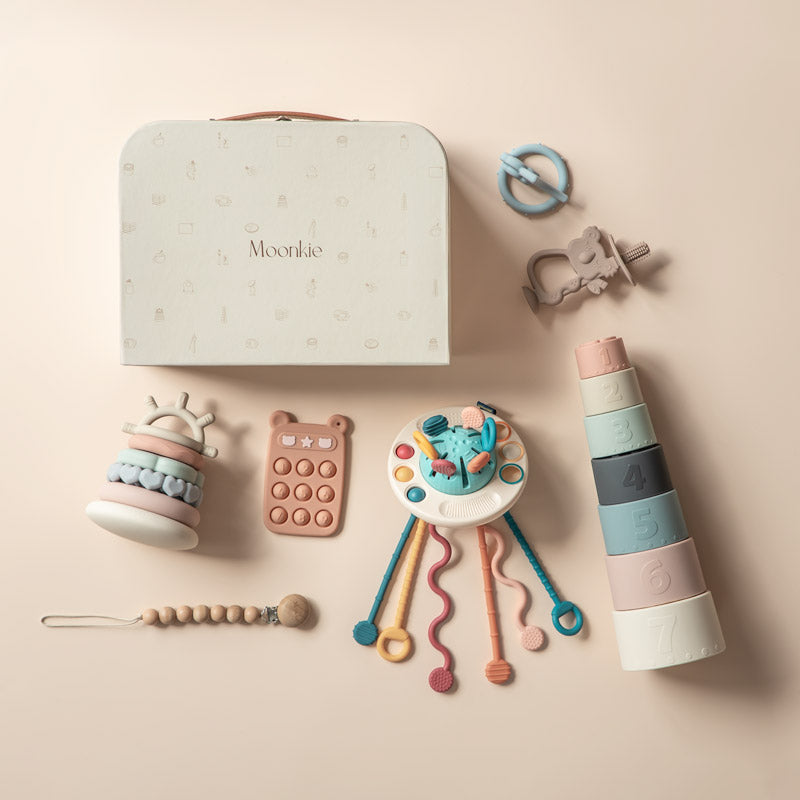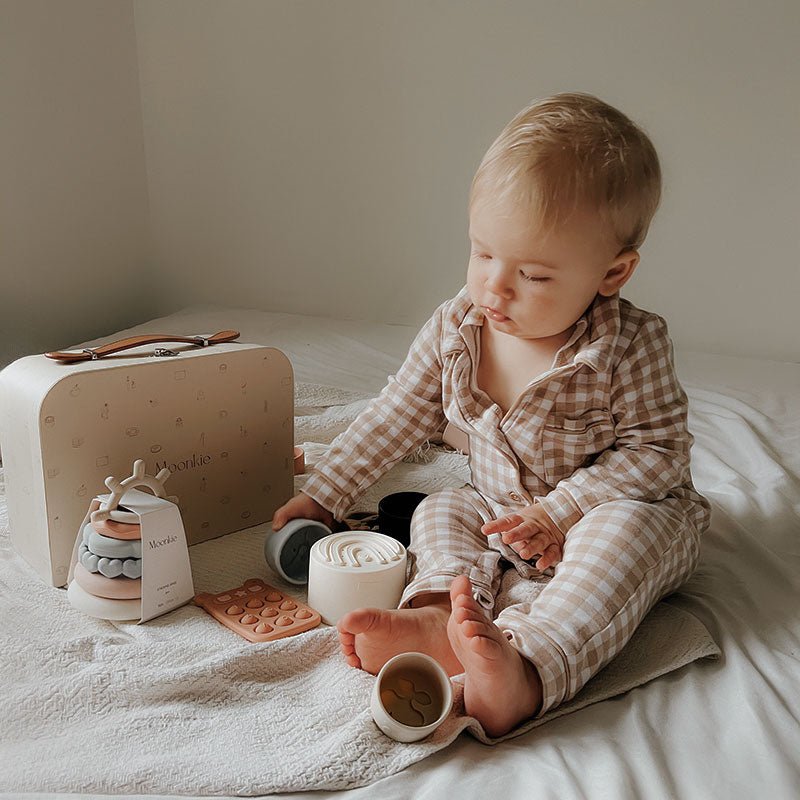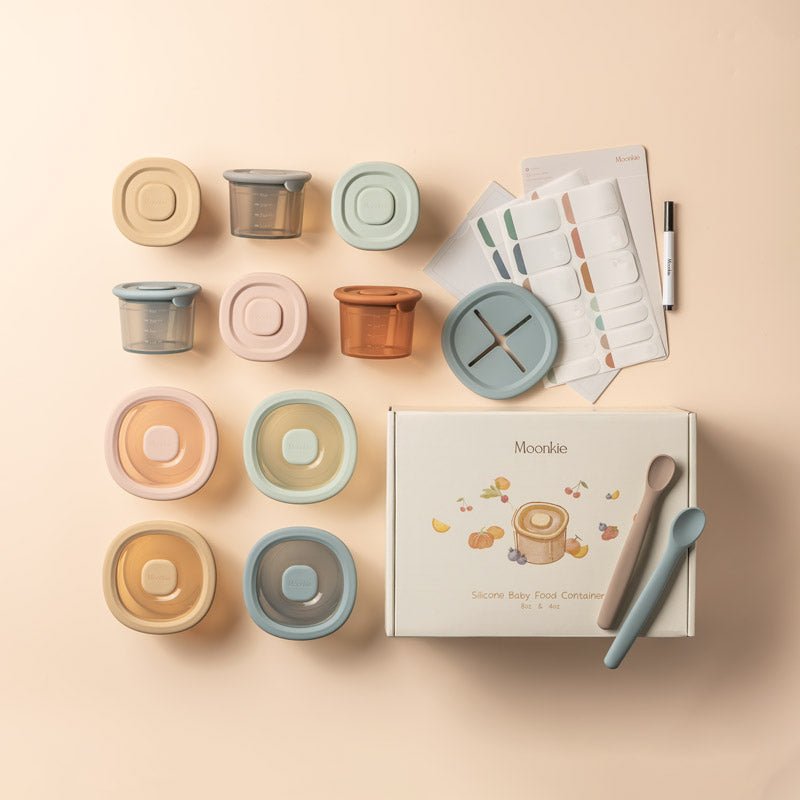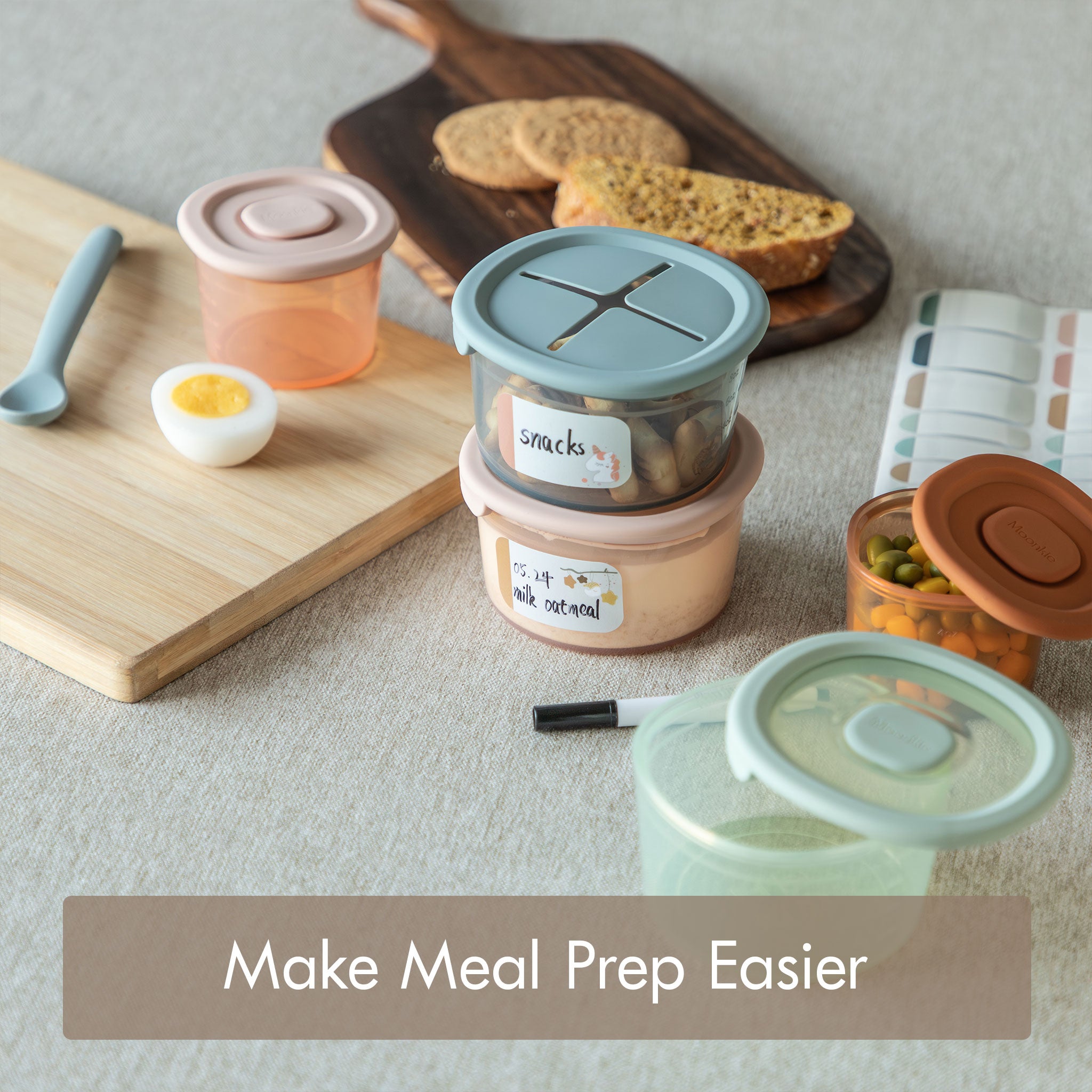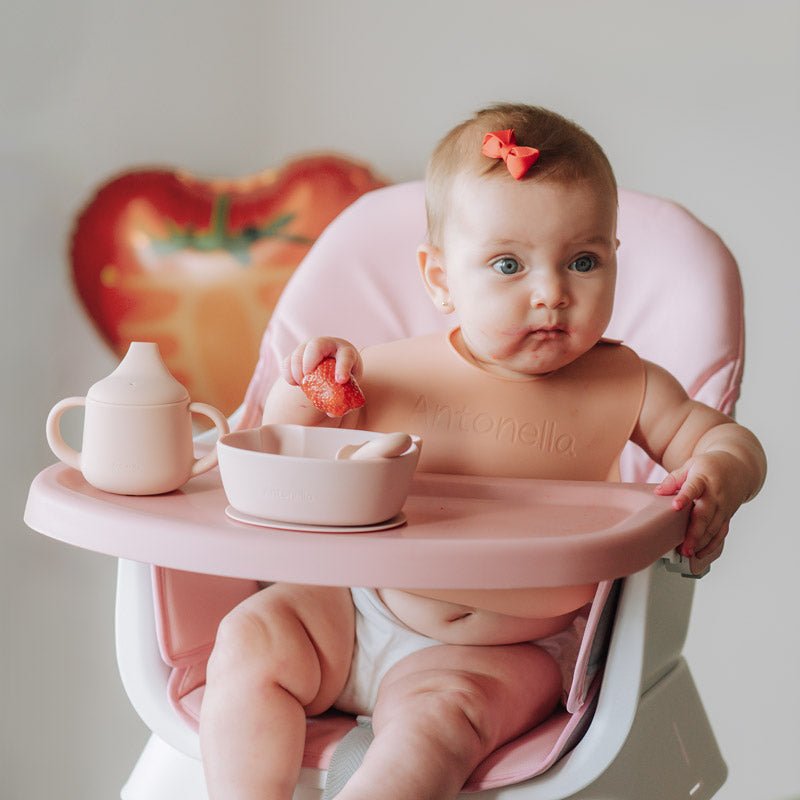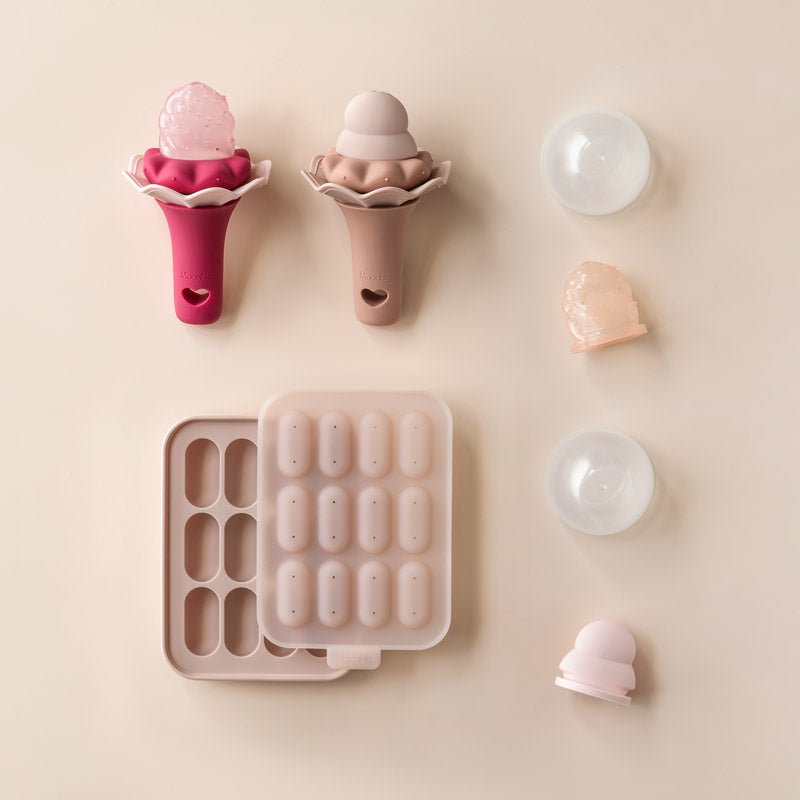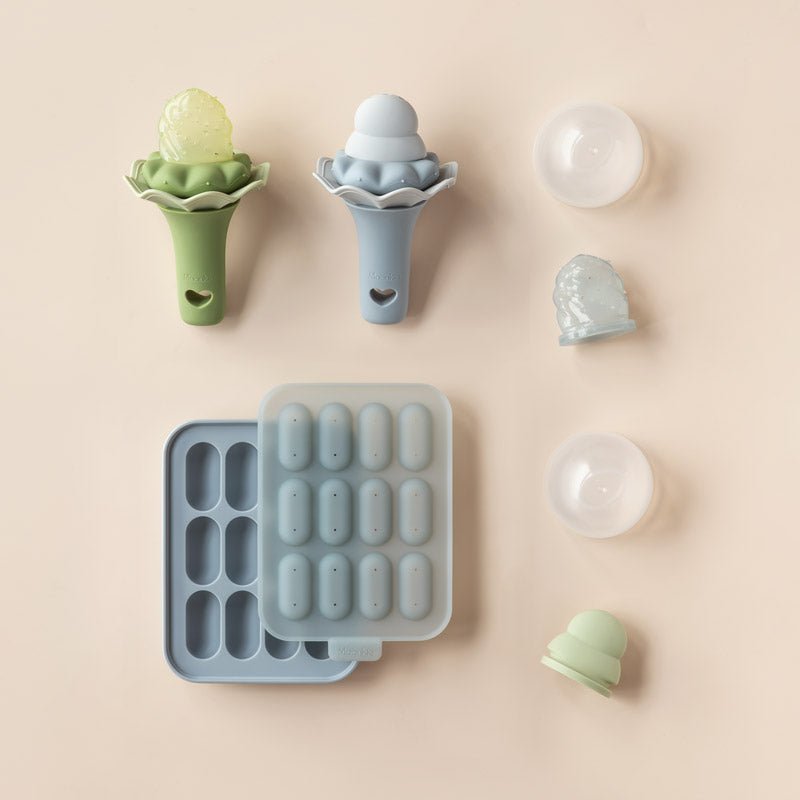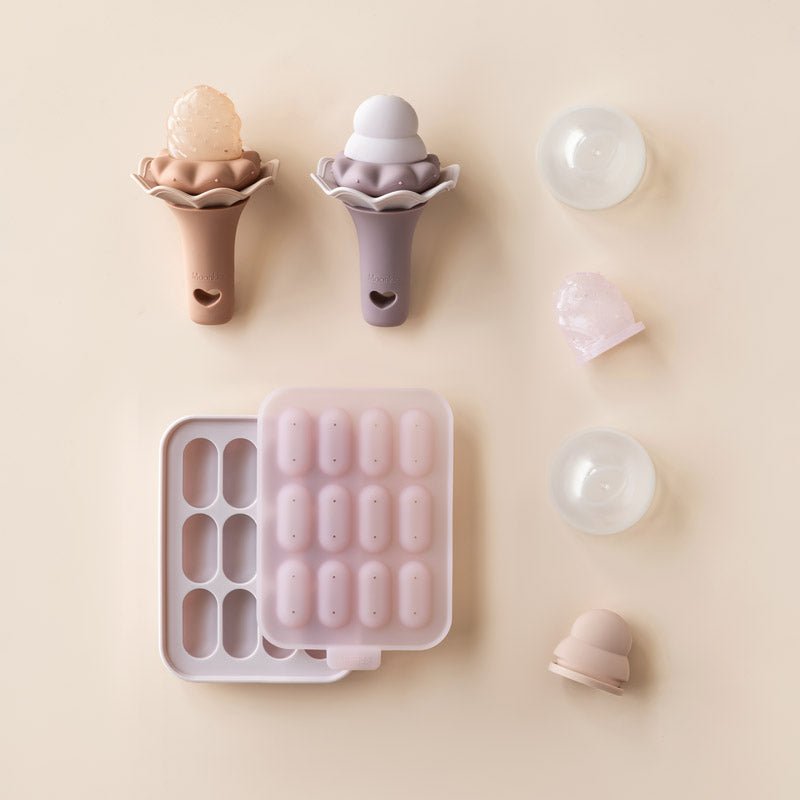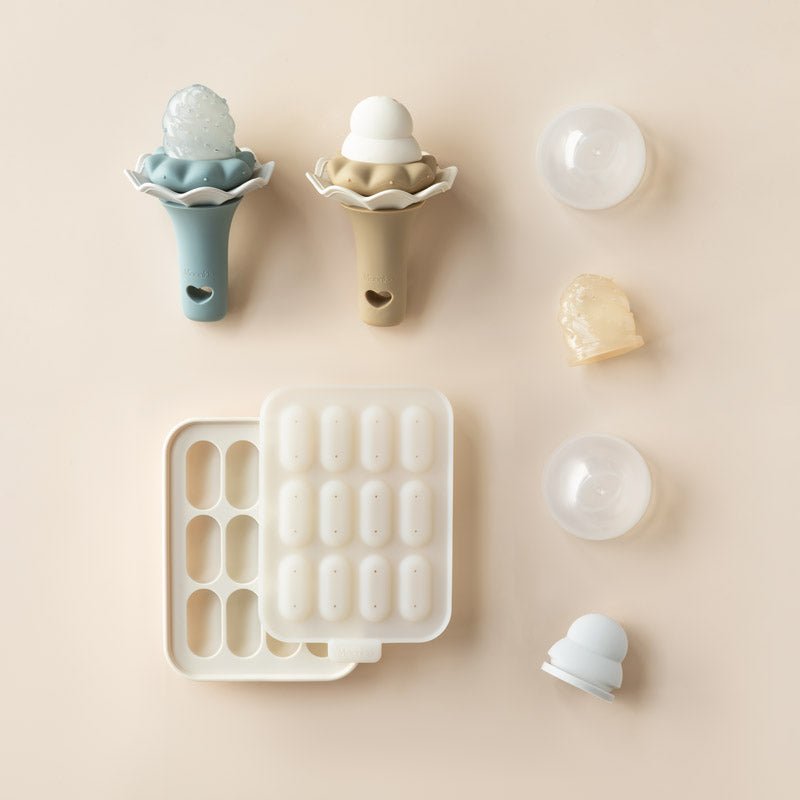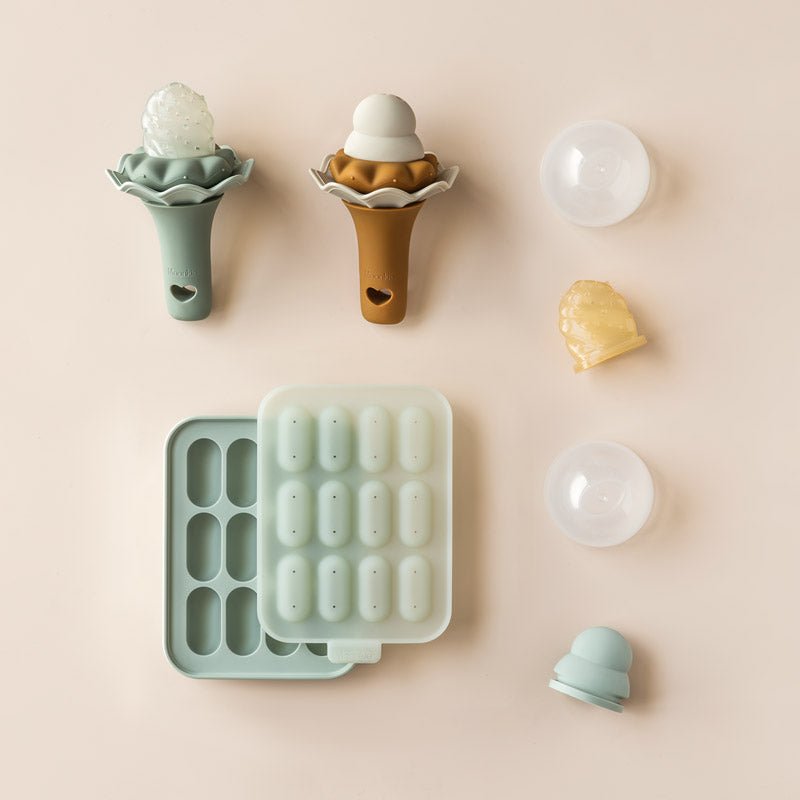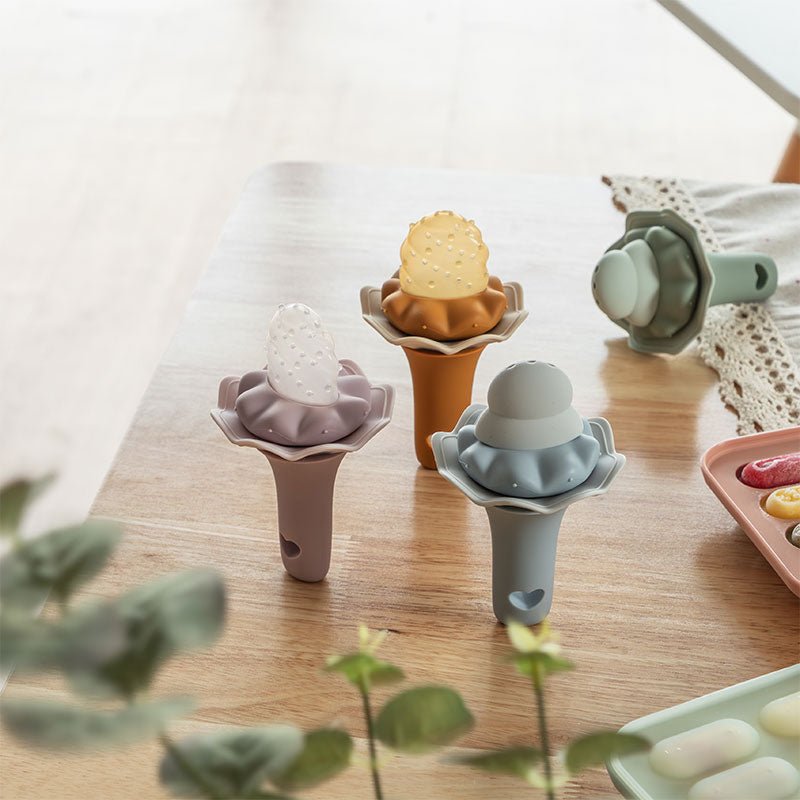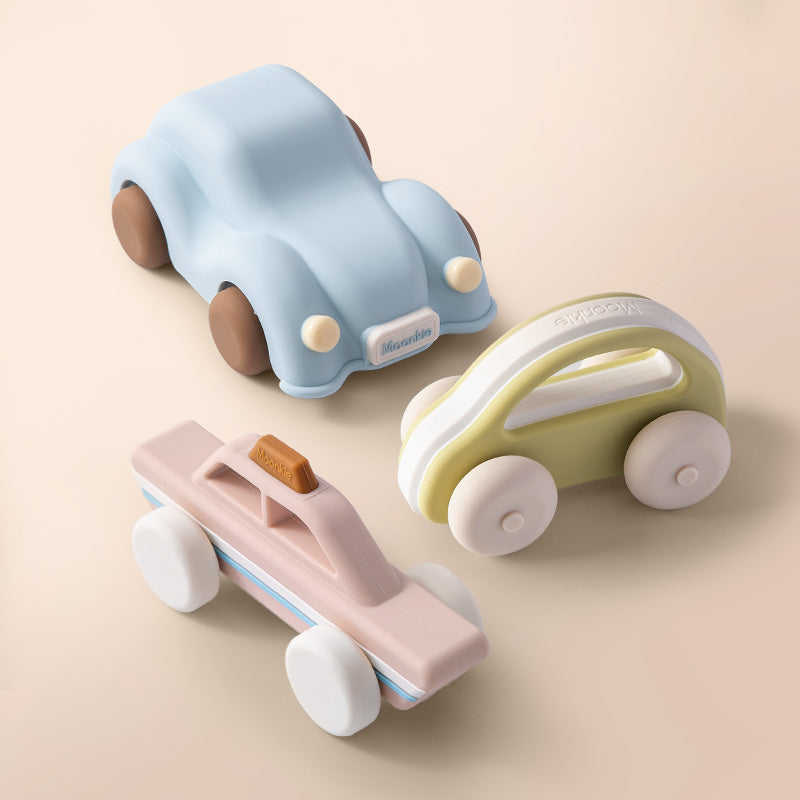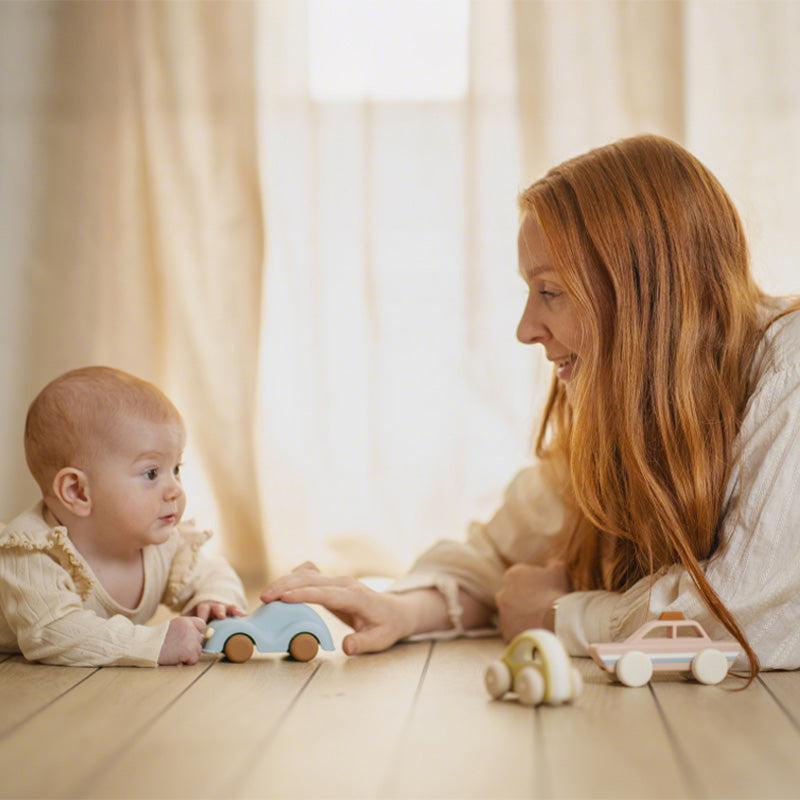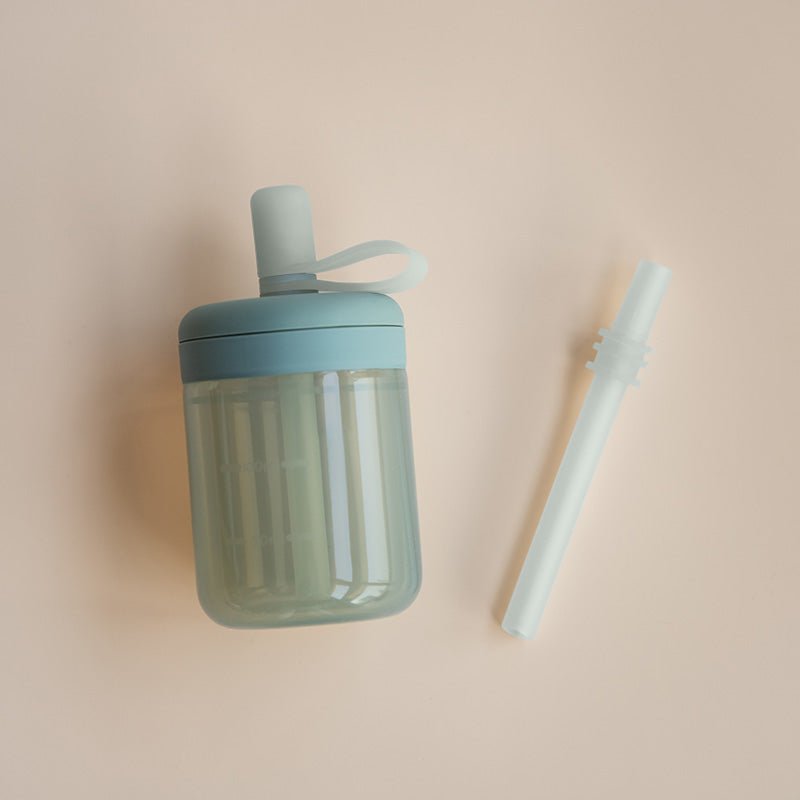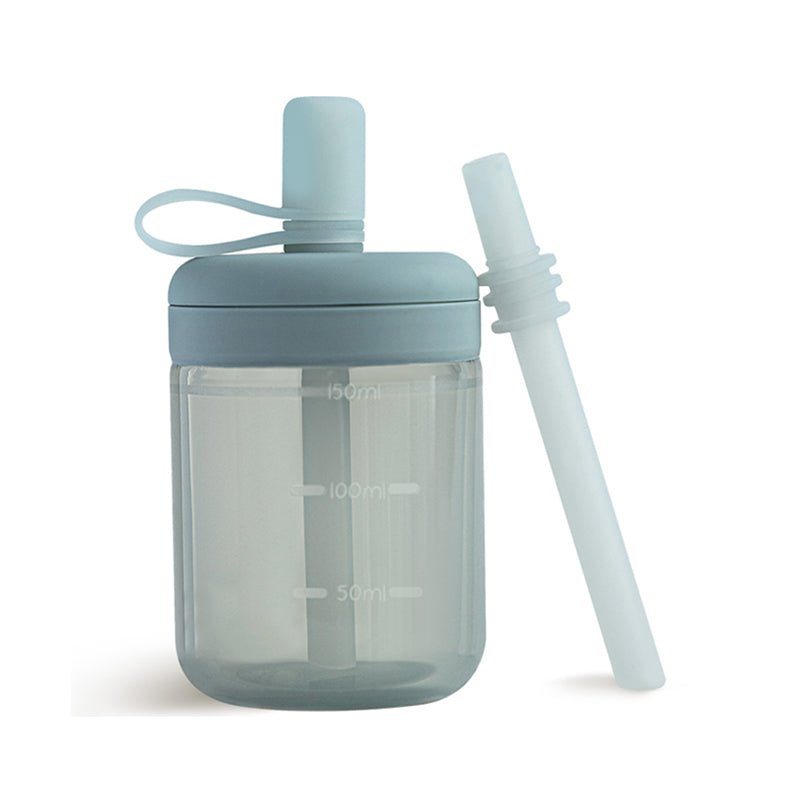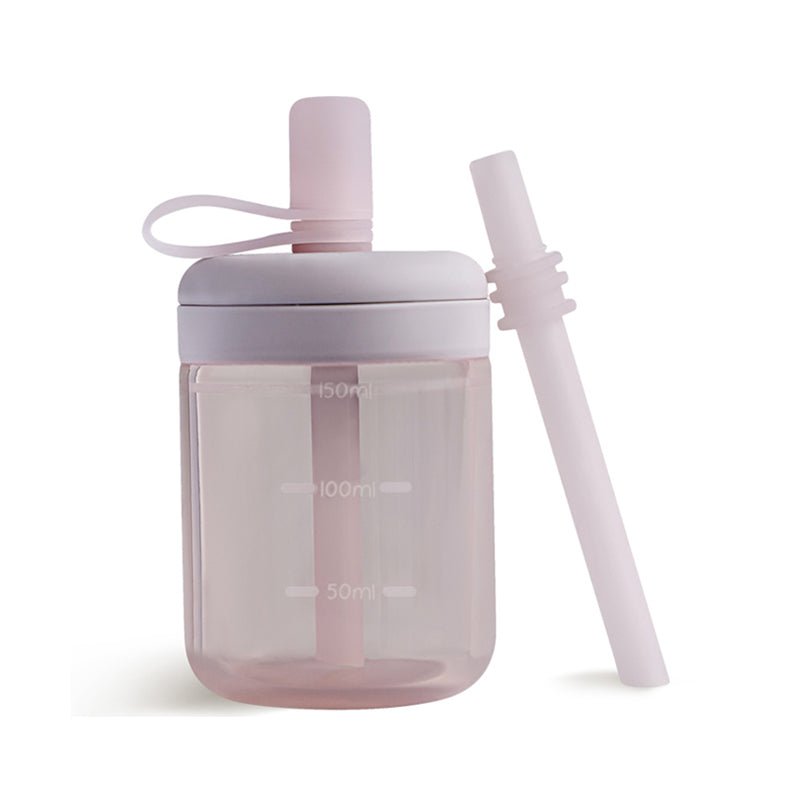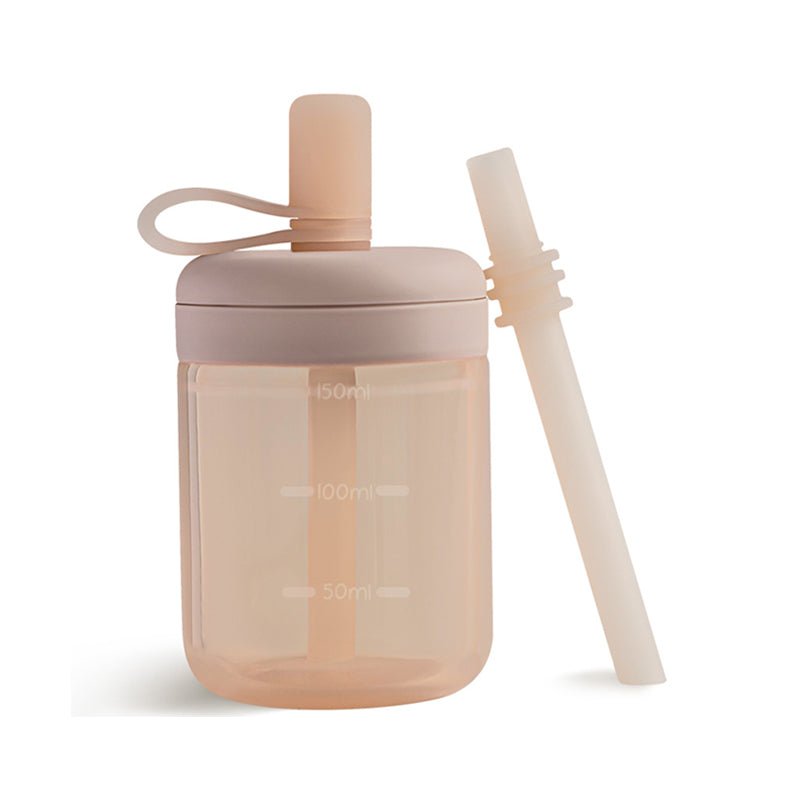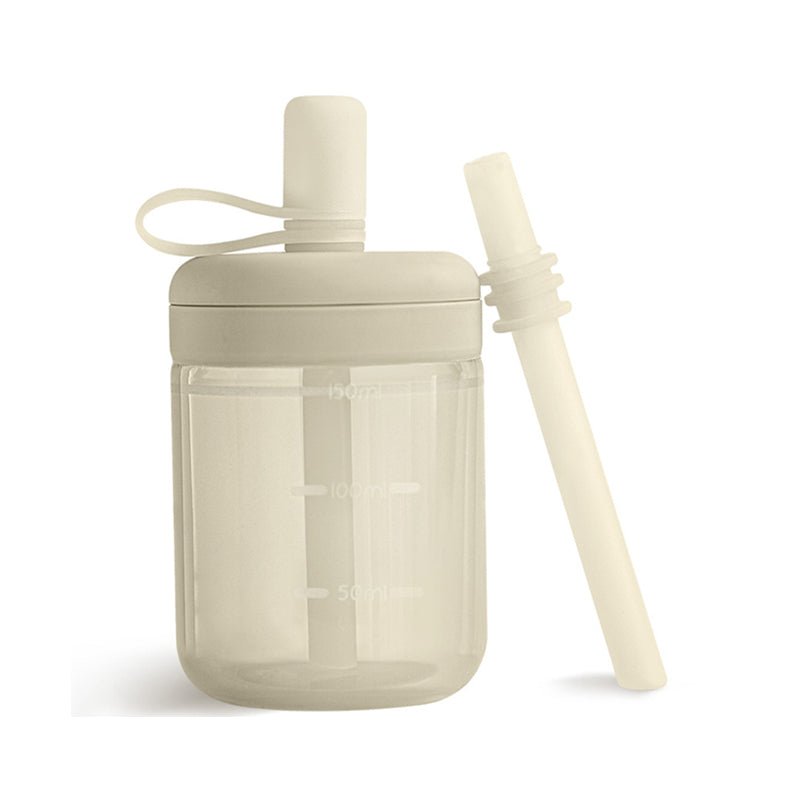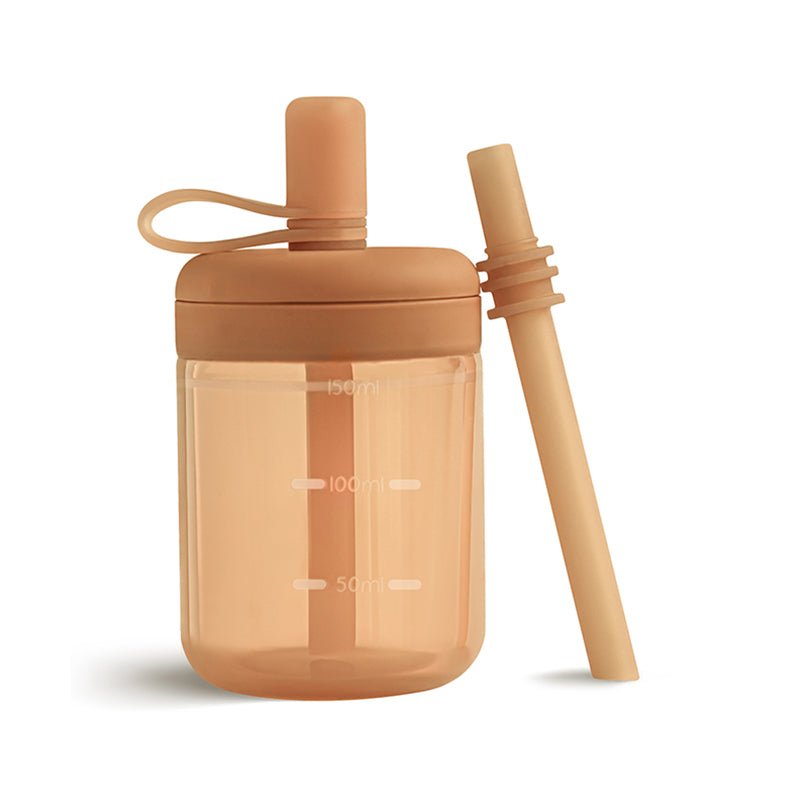
Babies are constantly learning and developing their senses from the moment they are born. From the first time a baby grasps an object to when they take their first steps, every experience is an opportunity for growth.
Sensory toys play a crucial role in your baby's development. Providing opportunities to explore the world around them and engage their senses, babies need a variety of sensory toys to expand their understanding of how things work.
Think about it: when playing with toys and textures, your little one builds his or her understanding of reality! In this article, we will outline the top sensory toys for every stage of babyhood, from teething to tummy time.
In This Article
Teething Toys for Babies Cutting Teeth
Teething can be the most unbearable of seasons for babies and parents. While cutting teeth, your baby feels gum discomfort, pain, and itchiness, leading to that infamous irritable nomming on everything phase. Teething toys are designed to soothe and alleviate these symptoms so everyone can sleep and go about life somewhat normally.
As an added benefit, teething toys also promote stress relief, as gnawing on textured surfaces with irritated gums will ease discomfort and calm a baby down, which in turn calms parents down.
Some of the best teething toys on the market include:
1. Silicone Teethers
These teethers are made from soft, durable silicone that is perfectly safe for babies to chew on. Perhaps the most significant advantage of silicone teethers is their wide variety of shapes and textures, providing chomping babies with a range of sensations to explore.

Moreover, silicone teethers balance durability with flexibility. Try as your little one might; he or she will not be able to bang or chew a silicone teether hard enough to break it. When chewed, the slight give in the teether can also provide a satisfactory sensation for babies who like to go ham in chewing things.
2. Wooden Teethers
Next in line are wooden teethers, a great natural alternative to plastic, gel, or low-quality silicone teethers. They are safe, durable, eco-friendly, and easily sanitized.

However, it is worth noting that wooden teethers are less durable than silicone teethers and will, therefore, require replacing. For example, if your little one begins leaving significant teeth marks, it is time to change out the teether to avoid possible splintering or chipping.
3. Gel Teethers
Gel teethers are usually a soft silicone shape filled with a gel that stays cool well after refrigeration, offering teething babies a chilly nomming treat for sore gums. These commonly come as rings, keys, or flat shapes that tiny hands can comfortably grasp.

Though these tend to hold up well to chewing, they should be retired when your little one has a full set of teeth to avoid mishaps. As a word of caution, never put gel teethers in the freezer.
Teether Shapes
Teethers come in all shapes and sizes, but a couple of designs are worth bringing up here. Teething rings are an excellent shape for baby to hold and chew on because they are all one piece.
But teething necklaces, though popular, are not recommended. Teething jewelry seems nifty because parents can wear a necklace or bracelet that their baby can chew on right away; in other words, teething jewelry is always at hand.
Unfortunately, teething jewelry is made of many small pieces, which makes it a choking hazard. Moreover, if a necklace can fit around an adult's head, then it is long enough to tangle a little one or cause strangulation (source).
Sensory Toys for Infants
Infants are constantly exploring the world around them and engaging their senses. Sensory toys can help facilitate this exploration, providing babies' rapidly developing minds with opportunities to develop their hand-eye coordination, motor skills, and cognitive abilities.
We've delved into this topic extensively in a previous article. If you would like to learn more about sensory toys and how they benefit your little one, check out Are Montessori Toys Better For My Baby?
Some of the best sensory toys for infants 0 to 6 months include:
1. Soft Blocks
Soft blocks are great for infants because they are easy for little fingers to grasp and manipulate. And your baby isn't likely to clobber themself or someone else too hard with soft blocks as they swing those arms about to learn coordination.

Soft blocks come in various textures, colors, shapes, and sizes to give babies a range of sensory experiences. As such, having a range of blocks for baby to explore is a good idea.
2. Rattles
Rattles are a classic sensory toy for infants because they promote hand-eye coordination, motor skills, and sight-sound association. You can find wooden and plastic rattles in many shapes, sizes, and colors.

With so many options to choose from, it is easy to get overwhelmed! Just know that you cannot go wrong with anything your little one can grasp well. If he or she doesn't seem interested at first, don't worry! The odds that baby will come back around to it at a later stage are high.
3. Playmats
Playmats are designed to provide babies with a safe and comfortable space to explore before they are up and crawling. They may simply be a quilt with different textured fabric blocks or a full playset with squishy toys and rattles hanging from an arch overhead.

Parents often use playmats for their baby's tummy time while getting some chores or cooking done nearby. Make it extra special by laying beside your little one and giggling away as they feel around!
4. Crib Mobiles
Early on, naptime and bedtime are often a struggle. Crib mobiles were designed to fix that issue with visual stimulation. A crib mobile, whether one that plays lullabies or not, hangs out of reach but in sight and moves slowly.

For many babies, focusing on something moving gently overhead is soothing and helps them fall asleep. As your little one becomes more agile and begins standing up, the mobile will either need to move higher or be removed altogether.
Sensory Toys for Crawling Babies
Once babies start crawling, the whole game changes drastically. More mobile and active, their sensory needs change. So, sensory toys for crawling babies need to promote physical development for movement and fine motor skills.
Some of the most entertaining and helpful sensory toys for crawling babies include:
1. Activity Tables
Activity tables are designed for physical movement, active play, and exploration. They come with various toys and activities that promote fine motor skills and cognitive development.

Common activity table toys include beads on colored wires shaped for concentrated movement, wooden gears for turning, wooden balls that move through a maze, and picture tabs that spin. These and other activity table toys are irresistible for crawling babies curious about everything!
2. Shape Sorters
A classic yet important toy at this stage is the shape sorter. Typically fashioned as a box and lid with specific shapes cut into it, babies are fascinated by pushing shapes into the right hole for short stints of time. As they get older, this toy will become even more fun for your little one.

You can find wooden, silicone, and plastic shape sorters just about anywhere baby toys are sold. If you are looking for a unique shape sorter to gift, you can look for themes like gardens, food, letters, and numbers. However, starting with the basic shapes is best at the crawling stage.
3. Play Tunnels
Play tunnels are fantastic for crawlers. Whether they are nylon fabric stretched over expandable hoops or a playtime tunnel with pads, little ones love crawling through tunnels.

The most fun part is watching your baby learn what all they can roll through the tunnel or seeing their face light up when they go through the tunnel into a fort. Littles love wiggling through tunnels!
4. Push Toys
Push toys are wooden or plastic carts that babies who are pulling up can push around on when experimenting with walking or even on their knees. Some push toys have a miniature activity table affixed to the front, while others host an assortment of colorful buttons that play sounds, songs, and lights.

Though your little one will take quite a few tumbles at first, they will soon learn not to put weight on the push toy and gain confidence in their walking.
5. Stacking Cups
Yet another classic toy, stacking cups are brilliant for training your crawler's grasping and hand-eye coordination skills. You can show your little one how to stack the cups, make them all fit into the largest cup, or how to knock down a tower!

Most stacking cups on the market are plastic, which can be a safety hazard when stomped on or cracked. Moonkie's sturdy silicone stacking cups hold up to anything your little one is likely to do to them.
Sensory Toys for Toddlers
As babies become toddlers, their sensory needs continue to evolve, so sensory toys for toddlers also evolve. Designed to make toddlers figure things out, toddler sensory toys promote their physical development, cognitive abilities, and emotional well-being.
This is the stage where sensory toys become more complex and engage multiple senses and skills simultaneously. Some of the best sensory toys for toddlers include:
1. Playdough
That's right, playdough is a great sensory toy for toddlers. Playdough is fun to squish, mash, roll, cut, and twist, which is the stuff of tactile exploration and creativity at this age.

Toddlers are not just observing their world at this point; they are learning to manipulate it. Anything like playdough is the epitome of this creative object manipulation and is essential to their well-being. I suppose that makes the playdough stuck in the carpet worthwhile!
2. Musical Instruments
Babies and toddlers love making noise, but toddlers actually have the ability to work toward mastering the fine motor skills necessary to play musical instruments. At this stage, musical instruments are incredible for helping your little one explore sound, rhythm, and movement.

Such opportunities develop a toddler's cognitive and emotional well-being as well. Though it may sound like chaos to adult ears, letting toddlers "strum" guitars, beat drums, mash piano keys, and blow through harmonicas sparks creativity and rhythm. With enough practice, your little star will begin distinguishing instruments in songs!
3. Puzzles
Whether they are wooden, plastic, or traditional cardboard material, puzzles are such a delight for toddlers, especially when mom or dad participates with them in putting it together.

Excellent for promoting problem-solving skills and cognitive development, puzzles are a marvelous opportunity for building your toddler's attention span and confidence. However, they do require a lot of patience from the parent upfront. Once they get the hang of puzzles, though, toddlers typically love them and invite new puzzle challenges.
4. Sensory Bins
Sensory bins are containers, bags, or bottles of materials that toddlers can explore. Sensory bin materials can be sand, glitter and water, marbles, pebbles, confetti, slime, flour, water, bubbles, and any other safe material for little hands to play in. You can even add tweezers, cups, tubes, spoons and other little toys for playing with the material.

Sensory bins give toddlers opportunities for tactile exploration and imaginative play (source). You will be surprised at how long a large bowl of dried beans and a cup can entertain a toddler! However, never let a toddler play with sensory bins unsupervised; they may attempt to eat the material, swallow small pieces, or add things you don't want them to mess with.
The Benefits of Sensory Activities
Sensory activities are essential to developing a little one's mind, body, and understanding of the world. They are any activity that makes your little one actively use their senses to play: seeing, touching, tasting, hearing, and smelling.
By actively engaging their senses through play, sensory activities help your little one develop their cognitive abilities, fine motor skills, hand-eye coordination, problem-solving skills, balance, sound association skills, and memory, among other things (source).
If you want to learn more about the benefits of sensory activities for babies and get more ideas on making them a part of your home lifestyle, read our article Baby Sensory Activities: A Guide to Promote Healthy Development.
In a Nutshell
In conclusion, sensory toys play an invaluable role in a baby's development mentally, physically, and emotionally. Moreover, they provide moments for you to connect with your little one and chances for independent play. Playing such a beneficial role in baby and toddler development, sensory toys are a worthy investment.
From teething toys to sensory bins, there is a wide variety of toys available for every stage of babyhood. By selecting appropriate sensory toys for each stage, parents can encourage healthy development as well as hours of fun and exploration, a time the Moonkie team delights in fostering with quality sensory toys.

